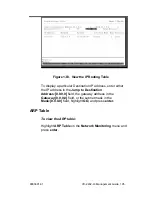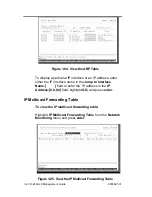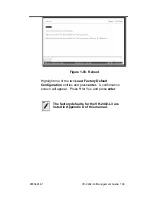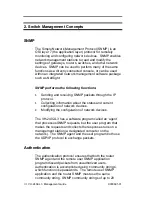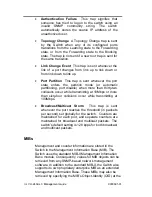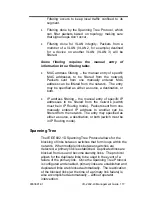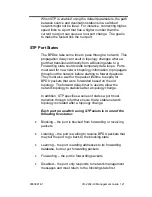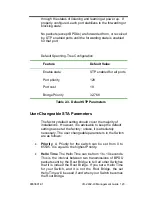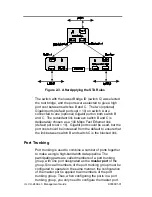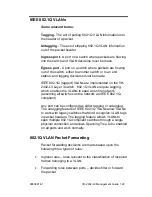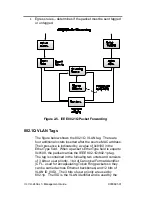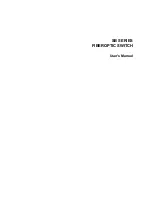
9033691-01
VH-2402-L3 Management Guide 117
Filtering occurs to keep local traffic confined to its
segment.
•
Filtering done by the Spanning Tree Protocol, which
can filter packets based on topology, making sure
that signal loops don’t occur.
•
Filtering done for VLAN integrity. Packets from a
member of a VLAN (VLAN 2, for example) destined
for a device on another VLAN (VLAN 3) will be
filtered.
Some filtering requires the manual entry of
information into a filtering table:
•
MAC address filtering – the manual entry of specific
MAC addresses to be filtered from the network.
Packets sent from one manually entered MAC
address can be filtered from the network. The entry
may be specified as either a source, a destination, or
both.
•
IP address filtering – the manual entry of specific IP
addresses to be filtered from the network (switch
must be in IP Routing mode). Packets sent from one
manually entered IP address to another can be
filtered from the network. The entry may specified as
either a source, a destination, or both (switch must be
in IP Routing mode).
Spanning Tree
The IEEE 802.1D Spanning Tree Protocol allows for the
blocking of links between switches that form loops within the
network. When multiple links between switches are
detected, a primary link is established. Duplicated links are
blocked from use and become standby links. The protocol
allows for the duplicate links to be used in the event of a
failure of the primary link. Once the Spanning Tree Protocol
is configured and enabled, primary links are established and
duplicated links are blocked automatically. The reactivation
of the blocked links (at the time of a primary link failure) is
also accomplished automatically – without operator
intervention.



